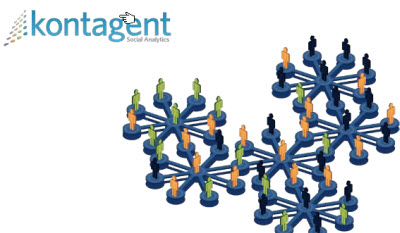数据度量分析将成为未来游戏设计的关键环节
SuperData Research是专注衡量数字产品的调查公司,公司使用内部度量分析、KPI和交易层面数据,帮助客户采纳、施行和调整他们的虚拟道具销售和微交易盈利模式。业界认为,掌握公司内部度量是建设可持续发展的盈利性在线娱乐公司的关键所在。2010年1月,SuperData Research获得多年种子资金。公司的客户群包括品牌所有者、开发商、零售商、发行商、风险投资商和支付平台供应商,该公司总经理Joost Van Dreunen就数据分析与游戏设计间的联系发表看法,以下是游戏邦编译的相关内容:
在对游戏数据进行分析前,或许要提出的最重要问题是“我能得到什么?”在回答这个问题前,我们势必会想起强调根据数据改变设计的社交游戏公司所获得的成功和游戏业内设计师对此新兴事物缺乏激情这对矛盾统一体。正如外界所指责的那样,新时代游戏开发商不再将游戏设计创新作为主导思想而只追求获得更多新用户,尽量将他们留在游戏中,随后最大程度地从玩家处获得资金。
数据分析
目前,美国数字销售、订阅和虚拟道具销售额占视频游戏总销售额将近1/4(比例为23%),而十年前这个数据只有1%。换句话说,游戏业销售模式正逐渐从零售转向游戏公司直接接触最终用户。这是个大变化,此前该娱乐业无需面对即时甚至毫不留情的客户反馈,这种转化给公司的创意和产品制作带来历史性的变革。设计师必须处理兴起的这种与最终用户间的直接关系,对他们来说既是挑战也是机遇。在此数字环境中,拇指规则(游戏邦注:可用于许多情况下的简单的、经验性的、探索性的但不是很准确的原则。)是游戏发布只预示40%工作的完成。
其次,在Zynga和Playdom等社交游戏公司崛起之前,用数据衡量游戏设计便已然获得成功。比如,CCP Games可下载科幻题材MMO游戏《EVE Online》曾自行招募经济学家成立分析团队,其工作便是发布游戏经济的季度性报告。虚拟世界IMVU采用的方法与之类似,雇佣一小批数据分析人员,他们围绕着价格弹性、理解季节性变化和与网络零售商竞争的虚拟道具推荐系统展开日常工作。也就是说,分析并非近年来兴起的廉价创新之举,这已经是可持续性游戏公司数年来的关键组成部分。
当然,许多公司并不想去开拓新方法。公司多数有天分的程序员通常都被指派到前端做产品开发,数据观察的任务暂时搁置。毫无疑问,处理不为人所注意的分析系统令人既畏惧又厌烦。而且,由于缺乏行之有效的方法和训练有素的人员,开发团队几乎都在不断沿袭前人用过的方法。
如何进行分析
越来越多的游戏公司开始在总体运营模式中采用分析数据做决定的方法。Brenda Brathwaite等资深设计师正在做的事情是,在下一代游戏开发中融入游戏设计师的直觉和分析得来的数量化度量结果。她辩解称,分析可以分清玩家行为及其原因,是指导游戏设计全局的有效工具。Dan Daglow、Richard Garriot和John Romero等其他资深设计师也同意这种观点。
但如果我不是个有大笔资金和数十年经验的设计师该怎么办呢?我能做什么呢?
首先,这不是门用来制造火箭的科学技术,没必要把事情复杂化。比如,构建简单的方法,显示何种销售渠道最有效,容易建立且对游戏运营有益。
其次,分析的重点在于从基础开始。尽管你的设计报告可能长达200页,但有些问题必须要关注。比如,刚开始你就要回答“我的游戏玩家来自何处?”和“玩家留存率有多少?”之类的问题。游戏发行后加上些许标签,随后数据开始呈现出来时,就可以定期关注产出来调整设计。
第三,指定某人做这项工作。你会发现,行业中各种成功案例都有个普遍共同点:这些事情有个专门的负责人。指派的分析师可以了解到受众的行为,为设计团队提供有价值的建议。
度量分析的两大成果
数据处理已成为各大公司的需要,无论你认为这是有价值且必须开展的工作,抑或你觉得做这件事会让大家分心,现在分析都成为日常事务。原因很简单,数据是非同寻常的资源,而且随着分析深入效能会逐渐增加。
简单来说,每个公司都有两种度量分析。一个围绕内部优化展开,尤其关注方法的构建,识别相关数据点帮助设计师更好地开展工作。在这个方面,Kontagent公司兢兢业业的Albert Lai为此做出极大的努力,向外界展示公司如何将度量用于内部优化。
为这个新行业环境所需要的第二种度量就是所谓的关键行为指示器。所有商务人士都会问:“我们如何根据整体市场走向来做事情呢?”游戏公司当然也不例外。在你着手开始为某个社交网络开发农场类游戏前,你可能需要调查了解总体市场的情况和发展的空间。这种做法甚至可能让你发现,去年的想法可以在今年打入市场。
尽管游戏业公司最初难以接受将数据分析融入游戏设计的想法,但不久之后这将成为行业内的普遍手段。因此,下次你发觉自己盯着数据提出“我能得到什么?”的问题时请记住,你能从数据中知道如何设计更好的游戏。(本文为游戏邦/gamerboom.com编译,转载请注明来源:游戏邦)
OF MICE AND METRICS
SuperData Research is a research provider specialized in digital goods measurement. Using internal metrics analysis, KPIs and transaction-level data, it helps clients adopt, execute, and adjust their virtual item sales and micro-transaction revenue model; it believes that mastering your internal metrics is key to building a sustainable, profitable online entertainment company. In January 2010, SuperData Research secured multi-year seed funding. Its client base includes brand owners, developers, retailers, publishers, VCs, and payment providers. Joost Van Dreunen is its managing director.
Perhaps the most important question to ask before performing a data analysis of your game is “What do I want to know?” Before answering it, we should reflect on the paradox between the success of social game companies, which emphasize data-driven design, and the lack of enthusiasm this new breed has received from designers throughout the industry. The latest generation of game developers, the accusation goes, occupies itself much less with innovative game design. Instead, it focuses on acquiring as many new users as possible, retaining them for as long as they can, and, finally, monetizing this audience for all they’re worth.
Tiger Analytics
Today, the combined share of digital distribution, subscription and virtual item sales represent roughly a quarter (23%) of the total video game sales in the United States, up from 1% only ten years ago! The industry, in other words, is moving away from exclusively retail-based revenue to business models in which game companies have direct access to their end-users. That’s a big deal. Being on the creative, productive side of an entertainment business without having to face immediate, sometimes merciless feedback is an historic anomaly at best. Having to deal with this newfound direct relationship with end-users, presents at once an immediate challenge and opportunity for designers. In this digital environment, the rule of thumb is that only 40% of the actual work is completed at a game’s release.
Secondly, long before social game companies like Zynga and Playdom showed up, there existed data-driven success stories. EVE Online, a scifi-based downloadable MMO by CCP Games, for example, recruited its own economist. Together with his team of analysts, his job involves publishing a quarterly report on what’s going on in EVE Online’s economy. Similarly, virtual world IMVU employs a small army of data scientists. Their day job revolves around price elasticity, understanding seasonal variation, and a virtual item recommendation system that rivals that of online retailers. Analytics, in other words, are not some cheap innovation from recent years, but have been a key component in a sustainable game company for years.
Granted, it presents a steep learning curve. Generally, a company’s most talented programmers are assigned to the front-end of product development, leaving the job of watching the numbers on the back burner. It can be no surprise that dealing with an unattended analytics system is both daunting and annoying. And, in the absence of a disciplined approach involving a designated driver, development teams are almost literally inventing the wheel again and again.
Adonis Design
A growing number of game companies are starting to apply data-driven decisions in their overall business model. Experienced designers such as Brenda Brathwaite are currently making a case for using both game designers’ intuition and the quantified metrics provided by analytics toward a next generation of games. Distinguishing between the ‘why’ of player behavior and the ‘what’, she argues, analytics can be a helpful tool in approaching game design holistically. Other veteran designers that echo the same sentiment include Dan Daglow (Neverwinter Nights), Richard Garriot (Ultima) and John Romero (Doom).
Well, great. But what if I’m not a designer with decades of experience and funding? Then what do I do?
For one, it’s not rocket science. There’s no need to make things unnecessarily complicated. Building a simple funnel that shows you, for instance, what marketing channels are most effective is easy to set up and makes good business sense.
Second, it is important to build analytics in from the ground up. There is no reason why your 200-page design document shouldn’t include a few paragraphs on things you think you need to track. Start with the questions you want answered: “Where is my audience coming from?”, “What is the retention rate?”, etc. Adding a few tags after your game has gone live is setting yourself up for disappointment. Then, once data starts pouring in, regularly look at the output and see how it reflects on the design.
Third, make it someone’s job. The various success stories you’ll find throughout the industry generally have one thing in common: there’s a designated driver. This allows your analyst to learn what makes your audience tick, and make valuable recommendations to your design team.
Bi-Winning
The need to deal with data isn’t going anywhere. Whether we believe it is valuable and necessary component, or whether we believe it is just another thing that distracts us from doing our job, it is now part of our everyday. The reason, quite simply, is that data present us with one of those remarkable resources that, in its use, increases in volume.
Succinctly speaking, there are two types of metrics for each company. The first revolves around internal optimization. Specifically, this refers to building funnels and identifying relevant data points that allow a designer to do a better job. On this end, the always-working Albert Lai from Kontagent has been making a tremendous effort to show how companies can use metrics for optimization.
The second type of metrics needed in this new environment are so-called key performance indicators. In every other business people will ask, “How are we doing in relation to the overall market?” And game companies can be no exception. Before you embark on the development of a farm-based game for a social network, you probably want to investigate how crowded the overall space is, and what the margins are. And maybe it will even show you where that idea you had last year could break some ground today.
Despite initial resistance to the idea of analyzing data as part of overall game design, this will soon become a common practice throughout the industry. So next time you find yourself looking at a bunch of data wondering “What do I want to know?” remember that you want to know how to design better games. (Source: Games Brief)










































 闽公网安备35020302001549号
闽公网安备35020302001549号